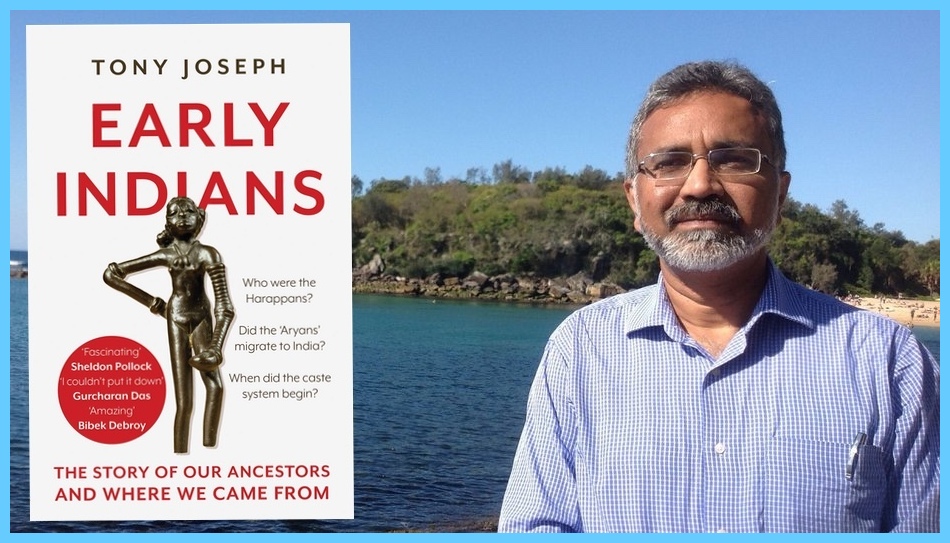Early Indians: The Story of Our Ancestors and Where We Came From; By Tony Joseph;262 pages; Juggernaut, 2018; ISBN 938622898X, 9789386228987.
By Neeraj Nanda*
MELBOURNE, 7 July: It’s handy for a person living here to say he/she came from a particular country with the passport stamp giving the date and year of entry into Australia. That makes easier to chart out Australian demography with extensive census statistics.
But Tony Joseph answers a similar question in this multi-disciplinary book in a different context. His area is the Indian subcontinent steeped in prehistory (the one before ancient, medieval and modern) trying to establish the different migrations that shaped Indian demography and population structure. What the subcontinent population are now is a consequence of these migrations. A conclusion offensive and toxic for those who stick with the view that the Aryans are the original inhabitants of the subcontinent.
Tony demonstrates with recent DNA, archaeological and linguistic evidence the migrations from Africa, Iran, Central Asian Steppe and others going back to 65,000 years in prehistory. To understand this the book relies on new findings made possible by ancient DNA, archaeological discoveries, anthropologists, epigraphists, linguists, palaeoscientists and historians to analyse the ancient past.
So, to appreciate and understand Tony Joseph’s book one needs to have a fair idea of what DNA is or what the many subjects (previous paragraph) he mentions for our understanding. The result is the diversity seen now in the subcontinent.
“What accounts for this level of diversity, this distinction, of India? In a sense, this is the story of this book. A large part of the genetic diversity is due to South Asia being second only to Africa in having being occupied for the long time by a large population of modern humans,” (Chapter 2, page 62).
The book is divided into four chapters – The First Indians, The First Farmers, The First Urbanites: The Harappans and The Last Migrants: ‘The Aryans’. These chapters are preceded by ‘A short chronology of the Modern Human in Indian Prehistory’. And in the end we have the Epilogue, Appendix, Bibliography, Acknowledgements and the Index.
Every chapter is compulsive reading. I am sure many will disagree with the conclusions. Tony calls his research the Indian ‘pizza’ that got into the act 65,000 years back as the base. The sauce then got made with the Harappa Civilisation, then came the Aryans spread as cheese more in the North and the toppings came as Greeks, Syrians, Mughals, Portuguese, British, Siddhis leaving small marks over the Indian pizza. And there is much more.
The Epilogue (Seeing History the Right Side Up) discusses the origin of the ‘caste’ and supports Ambedkar as saying, “So, Ambedkar was right when he said the Sudras were genetically not different from the rest of the Indian caste society” but disagrees with him for “…denying ‘Aryan’ migrations altogether…”. This, Tony feels, came about because “… he did not have the genome data that we have today.”
Basically, this well researched book deals with – Who were the Harrapns?, Did the ‘Aryans’ migrate to India? And When did the caste system begin? These are all dealt with caution and deep analysis of recent DNA evidence. The approach is scientific and rational making it a path breaking book on the prehistory of the Indian subcontinent. Well done, Tony Joseph.
Lastly, the author himself asks the question – So who are we Indians, really? And answers it- We are all Indians. And we are all migrants.
* The reviewer a senior journalist is based in Melbourne, Australia and the Editor of South Asia Times (SAT).






